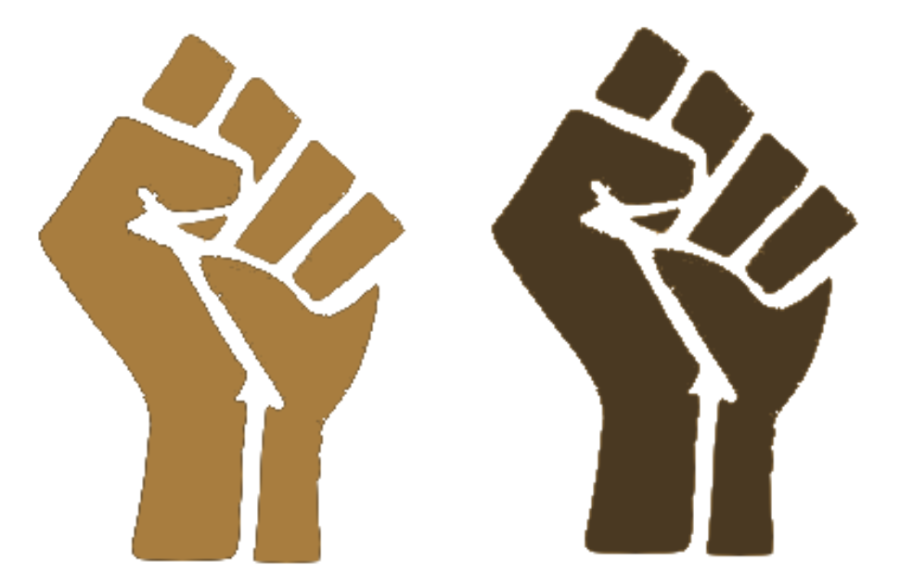Shades of privilege
Think about the last time you went to a history class, or read a book, or even watched a movie. Chances are, you saw faces that looked like yours–if you’re in the racial majority, that is. For those who belong to a racial minority, however, this isn’t always the case.
For instance, a UCLA Holly- wood Diversity Report from 2019 reported that seven out of 10 lead actors were white.
This isn’t just a problem in Hollywood but in all forms of media, even kids’ books. Multicultural content in the past 24 years only makes up about 13% of children’s literature, and of that, only around 7% were written by people of color, according to research by Lee & Low Publishing Company.
That lack of representation of people of color can have some unexpected effects.
Last December, Chidiebere Ibe, a Nigerian medical illustrator, went viral on Twitter with an illustration that featured a fetus with Black skin. It was the first time that many people realized they had never seen a drawing of a fetus with anything other than white skin.
The ability to walk into a classroom, look at a textbook and see people who share the color of your skin is a privilege that some in the majority may take for granted.
And it’s one that can have unintended effects, such as feelings of inferiority and insecurity.
Representation is only one form of racial privilege, however. According to the Merriam-Web- ster dictionary, “white privilege
is the set of social and economic advantages that white people have by virtue of their race in a culture characterized by racial inequality.”
Historically, people of color have faced issues with housing and employment discrimination in the United States, for instance. Everyone should know that it’s wrong to discriminate against others solely based on their race, but people have biases that they may not be aware of. Because of this, the discrimination sometimes goes unnoticed.
People of color often report feeling pressured to present themselves in such a way that won’t make their race look bad because they are perceived as representatives of their race.
This was made especially clear to Dr. Gwen Alexander, upper school biology and anatomy and physiology teacher, while she
was attending the University of Wisconsin, a predominantly white institution.
“Going to Wisconsin, it was definitely a culture adjustment, in the classroom, worse even in my department. I was the only person that looked like me,” she said. “Now, granted, there were other students of color, I will say that, but being the only person that looked like me, I’ve had professors who had never taught someone that looked like me.”
She said she had, “One professor in particular, [a] female white professor, who said to me one day: ‘how does it feel to be the poster child?’”
“I don’t think she was trying to beat around the bush because she knew all eyes were on me,” she said. “I stuck out. There was no blending in for me at Wisconsin.”
Unlike the University of Wisconsin—whose people of color population makes up around 17.5% of the enrolled student pop- ulation, people of color enrolled at St. George’s make up roughly 36% of the student body.
St. George’s states in its mission statement that the community welcomes and respects all racial and ethnic backgrounds. They affirm differences as sources of strength that create a culture of transformative diversity.
Because St. George’s is a more intentionally diverse institution, freshman Jade Olende said doesn’t feel singled out.
“I feel like even the students, most of the time, are pretty respectful and helpful, so honestly I can’t really say that I’ve experienced, or seen anybody else experience a disadvantage,” she said.
“I think the school offers an equal opportunity to all races for a better education,” she said. “I don’t feel like there are any hold backs, just because you’re black, white, or asian, or anything.”
While this is true, that doesn’t mean there aren’t places to improve as well.
Senior Karsen Ryan said she would like to learn more about all aspects of African American history in her classes, not just the negatives.
“I mean there’s [an African American history] class, I take the class, but there’s only four kids in it, and they’re all Black so it doesn’t really help other people learn about it,” she said.
One way to do this would be learning more about the history of the different minorities in not just our school community, but in our city as well.

1. Comments must have a verifiable first and last name and email address.
2. Comments may not bully, belittle, or make ad hominem attacks.
3. Comments may not purposefully distract from the subject at hand.
4. Comments may not be used to advertise.